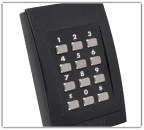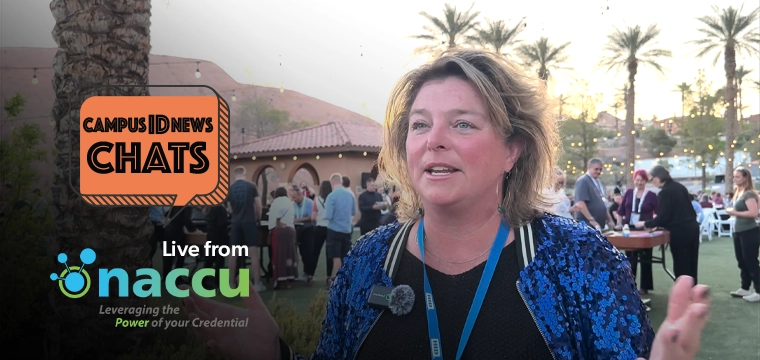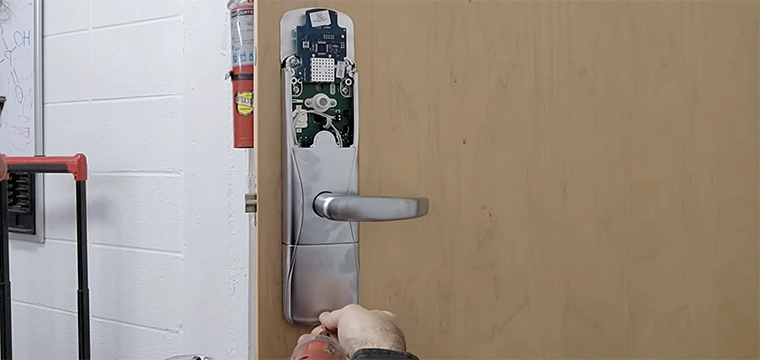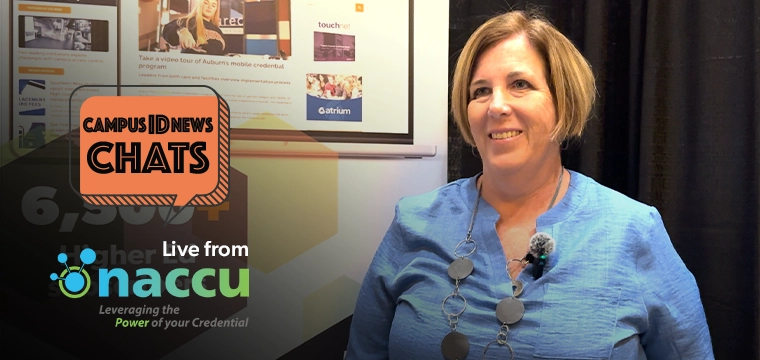
But will its use expand beyond access control and into other card applications?
By Andy Williams, Contributing Editor
It wasn’t too long ago that contactless technology was considered the Cadillac of card technologies, but decreasing prices and increasing security concerns have placed contactless squarely in the sights of many college campuses.
HID Global’s Mark Doi welcomes the change. He represents the security provider as director of end user accounts for the Education Market, and in this role works with campuses across the country. “Contactless has become an essential technology for new and expanding campus card programs,” says Doi.
The number of campuses using the technology is growing rapidly around the world and in the U.S. In Europe and Asia, campuses have been using contactless technology for years. Products like LEGIC, Mifare from NXP and FeliCa from Sony are used to control access to facilities and conduct other campus-specific transactions.
In the U.S., HID Global’s iCLASS product is the dominant contactless technology on campus. According to Doi, “we have more than 100 schools using, or in the process of migrating to, iCLASS.”
Differences between contactless and prox
It is important to clarify the distinction between contactless technology and proximity technology. Though this nomenclature does not hold true for all parts of the world, in the U.S. there is a very significant difference between the two.
Prox cards are an older access control technology that is limited to basic communication of a single identification number to a reader.
Contactless cards, on the other hand, are smart cards with chips that can hold multiple ID numbers, manage applications and process transactions on the card. The technology also enables complex security techniques to encrypt communications, enforce card to reader authentication and more.
When Doi references 100-plus campuses using iCLASS, he is referring to HID Global’s contactless product, not its widely used proximity product. He estimates that at least 300 campuses use the company’s prox cards, which are so common in North America that many simply call them “HID cards.”
How are campuses using contactless?
Access, access, access … this has been the mantra for contactless technology on U.S. campuses to date. The vast majority of institutions using the technology have installed contactless door readers and tied those readers into their security system. Cards containing both the contactless and magnetic stripe technology are issued to the population or a subset of the population.
The contactless component drives the access control transactions and the magnetic stripe is used for the non-access functions. Every campus card vendor almost certainly has client institutions that are operating in this manner, and every campus is capable of doing so.
But the question remains, when will the multi-application capability of the contactless technology take hold? When will the traditional campus card functions–meal plans, library patron ID, payment for vending and laundry environments, etc.–migrate to the contactless world? In a select few instances, this has already occurred, but the migration is gradual.
Campus card vendor offerings differ
SmartCentric rolled out its contactless products last year. The Irish company launched SmartCity 6 in 2007 in response to customers requesting the technology, says SmartCentric CEO Kieran Timmins. The product includes support for contactless payment transactions and privilege control beyond the more common physical security uses.
“Our SmartCity System is a full campus card system providing many applications on a single contactless card,” adds Timmins. Five campuses in the U.S. serviced by SmartCentric are using contactless and “we are working with another two.”
Heartland Payment Systems, new owners of campus card provider General Meters, offers contactless acceptance for on and off campus payments. “Our college and university clients are requesting that we enable (contactless) technology in not only new installations, but retrofit existing installs as well,” says Bill Norwood, micropayments solutions architect for Heartland.
The CBORD Group, which supports HID Global’s iCLASS cards in its access control offering, has seen an uptick in contactless interest even though it has “historically been greater in the international market,” says Randy Eckels, senior vice president, sales and marketing. “Interest in contactless technology has steadily increased amongst our client base with new inquiries coming in frequently. A meaningful percentage of CBORD customers have already implemented the technology.”
He says the company is “constantly gathering feedback from our clients on new technologies they would like us to offer. Many of the contactless solutions we offer currently were the result of university requests,” Eckels adds.
Swiss company LEGIC Identsystems, a provider of contactless technology to campus card suppliers and others, sees the demand for its products from colleges and universities “constantly increasing,” says Otto Eggimann, vice president sales and business development.
Blackboard VP of Marketing Jeff Staples says that a number of the company’s clients have implemented contactless for security applications and many more are considering it. “Blackboard is committed to delivering solutions to fit the needs of our clients,” he says, “and we see a bright future for contactless technologies.”
The market got a view of Blackboard’s plan via an announcement last November. As outlined in a company press release Blackboard is building support for Sony’s FeliCa contactless technology and Near Field Communications (NFC) into the overall Blackboard card and transaction system. The announcement alludes to the deployment of contactless technologies beyond access control.
Migration to contactless: Pros and cons
Contactless enables “a simple and easy-to-handle application of the technology for the user,” says LEGIC client Andreas Pircher, with Bozen University in Bolzano, Italy. “The user doesn’t even have to take the smart card out of his wallet.”
Utilizing contactless technology is “driven by the advantages of convenience as well as performance,” says Steve Noret, associate registrar at the University of California-Merced, a CBORD client. “With less direct contact to a card, there is an inherent longevity that may be enjoyed for the card itself.”
Since the Merced school is relatively new–the first research university built in the 21st century–it didn’t have a legacy campus card structure in place, which meant there were no infrastructure upgrade costs, says Noret. “We made a conscious decision to use our current system after much research, and even visiting campuses across the U.S. to see their particular systems,” he says.
Contactless technology also provides an additional level of protection against fraudulent or counterfeit card creation. Though experts are quick to point out that no technology is completely impervious to fraud, contactless technology provides a major improvement over magnetic stripe or barcodes when it comes to counterfeit resistance.
The major drawback traditionally cited against contactless is the added cost when compared to magnetic stripe-only cards. But LEGIC’s Eggimann points out, “a new installation is, of course, a big investment, but customer’s ROI calculations prove that the investment is protected.”
Depending on the size of the implementation, universities may decide to re-card their campuses or convert a significant amount of existing equipment to new devices, says CBORD’s Eckels. “Activities of this scale require an investment of time and careful planning.”
SmartCentric’s Timmins agrees, noting that before making the contactless plunge, campuses should have the right business plan. He suggests a “phased approach which helps them from becoming overwhelmed by the tasks and enable them to support existing applications while upgrading one or two applications at a time.”
Will the mag stripe be a thing of the past?
Most agree that even when more of the campus card applications can be handled via the contactless card, there will still be a role for the magnetic stripe. Legacy systems, home grown applications, and instances where security is not crucial may continue to rely on magnetic stripe and barcode technology in perpetuity.
Merced’s Noret agrees. Even though the California school was not saddled with legacy equipment, he believes a dual technology card is perfect for most schools, as it has proven to be for his institution. “The mag stripes are used with some of the point of sale systems such as cash registers and the laboratory printers, laundry and library copiers. The contactless is used for access, library checkout system, and gym membership,” says Noret.




